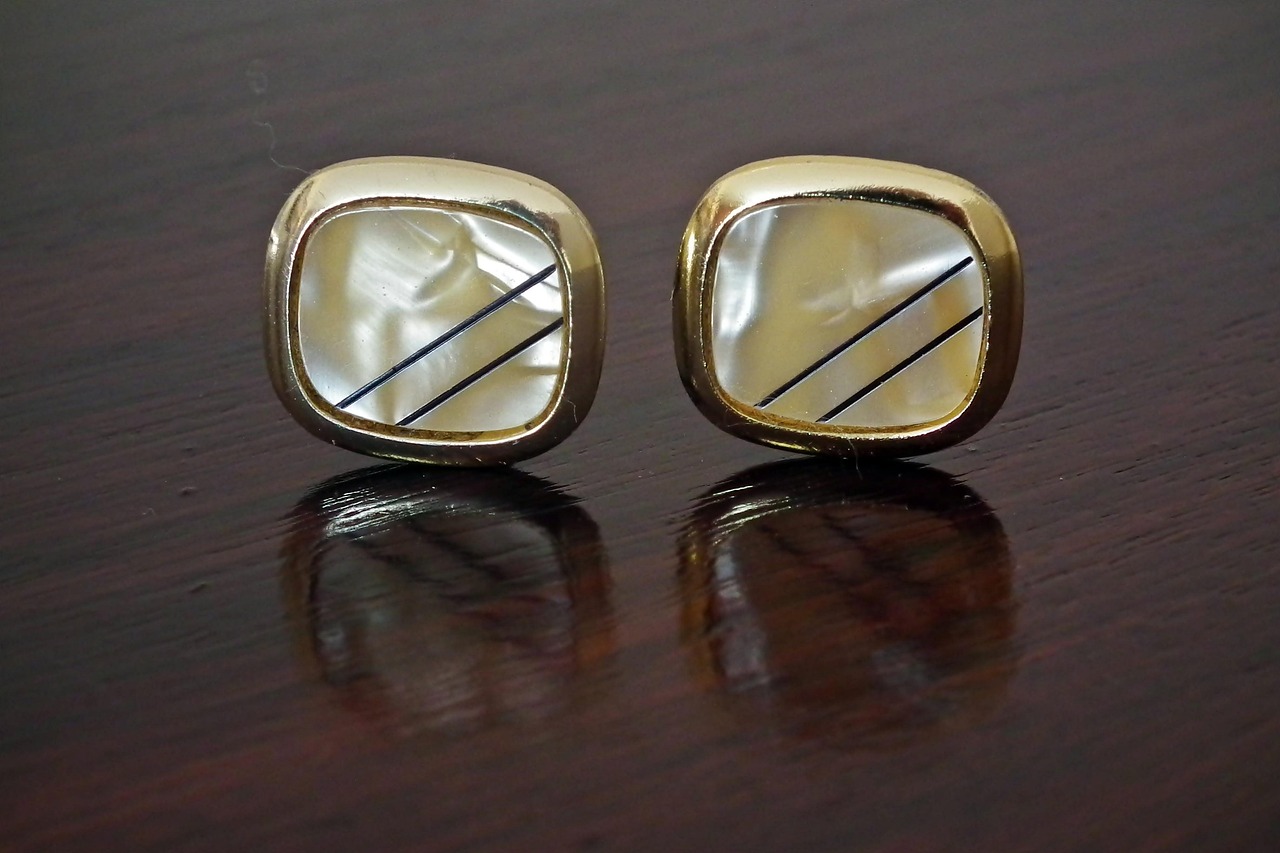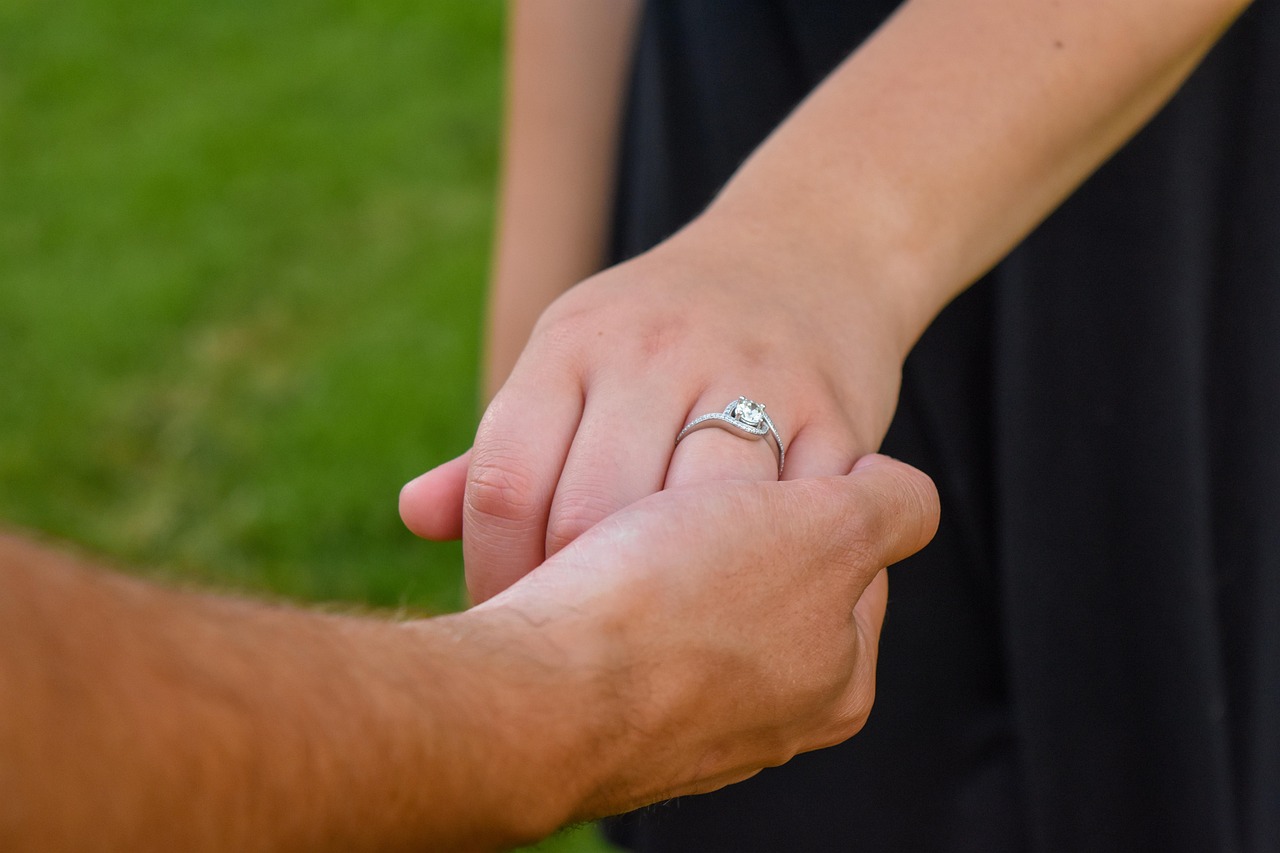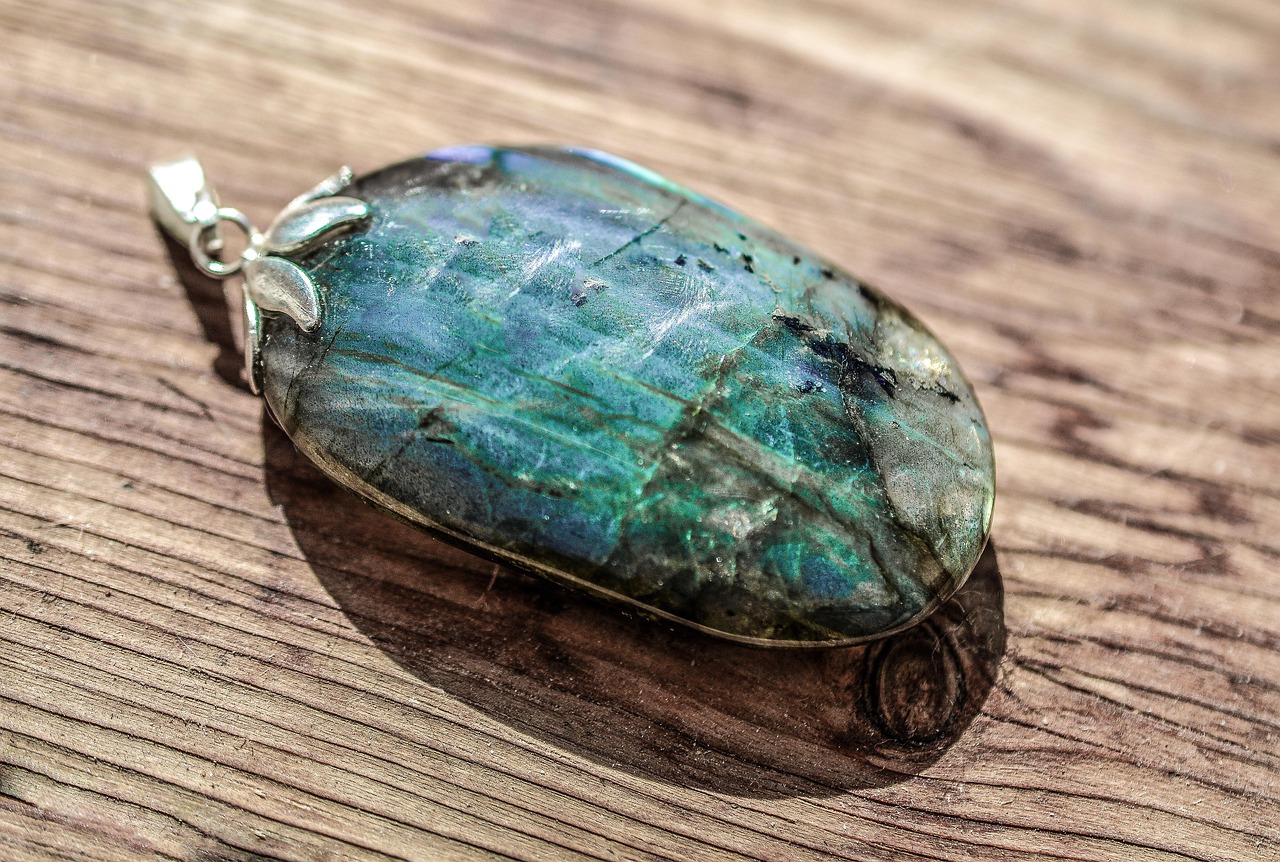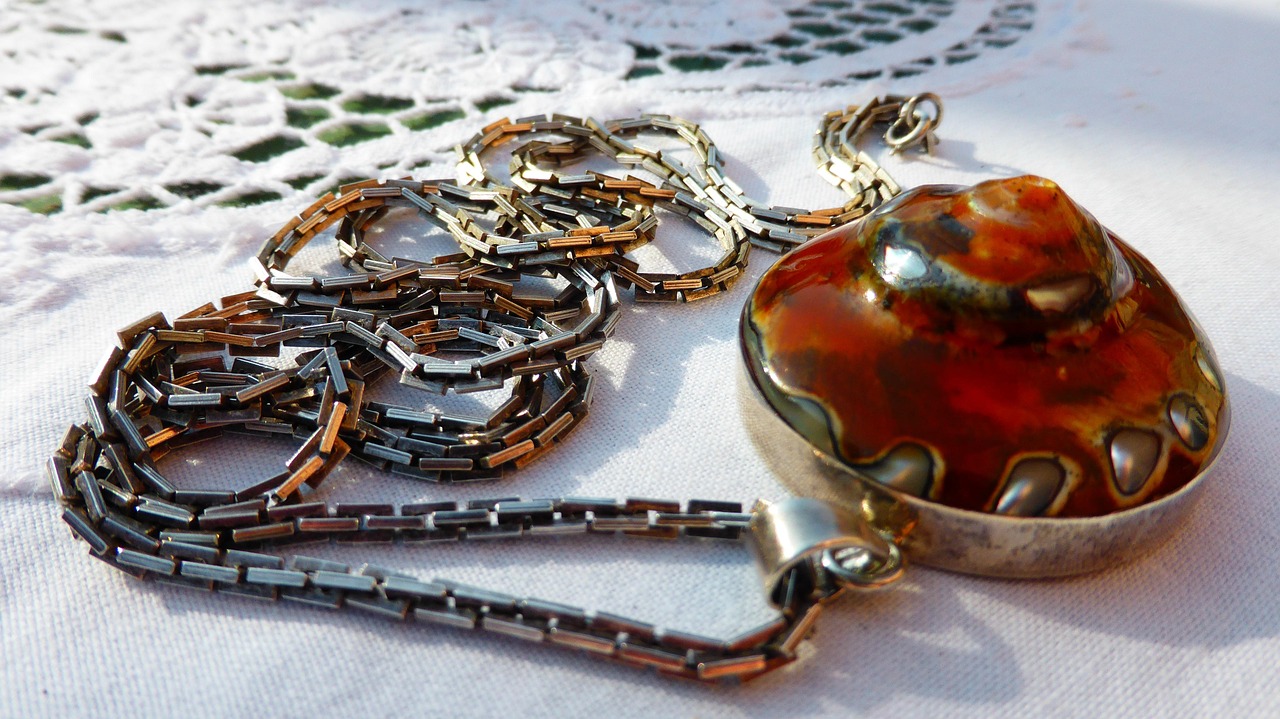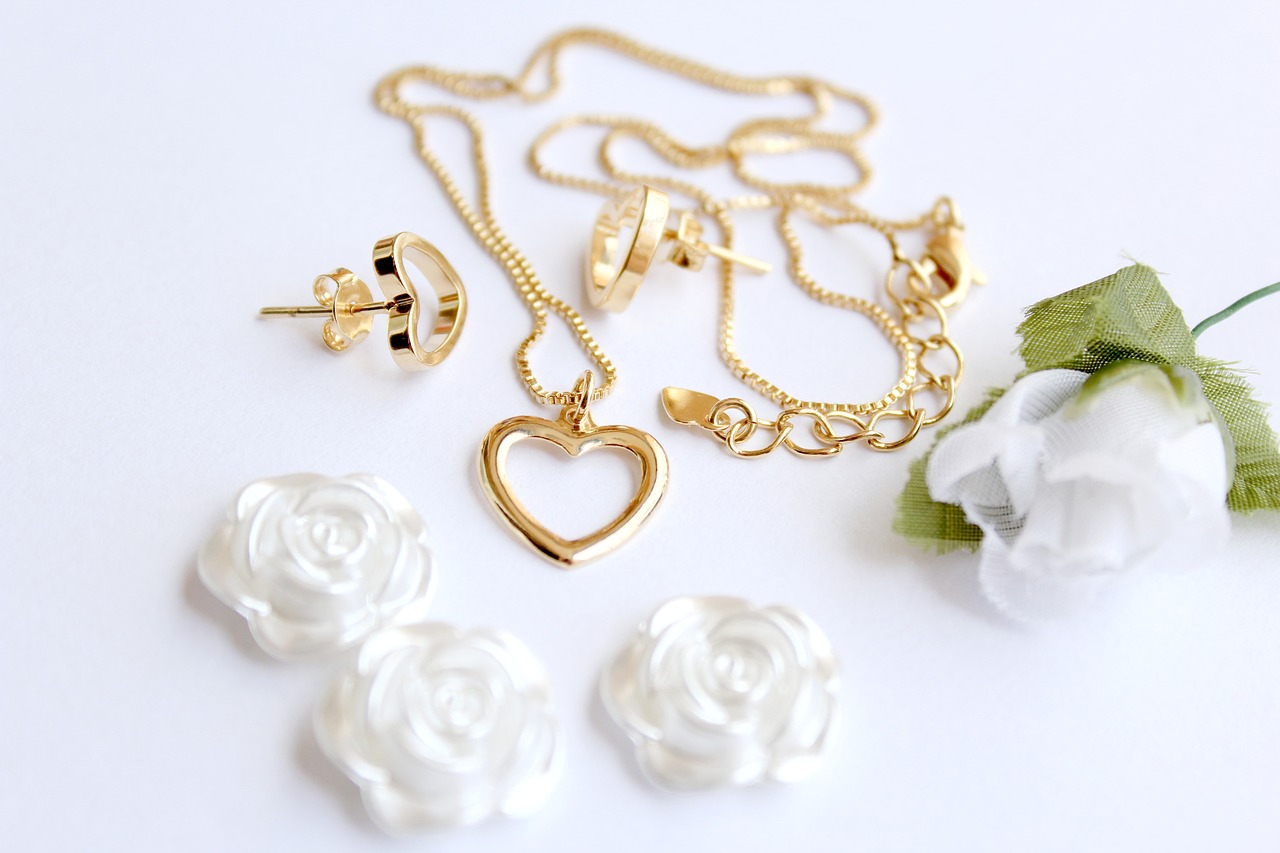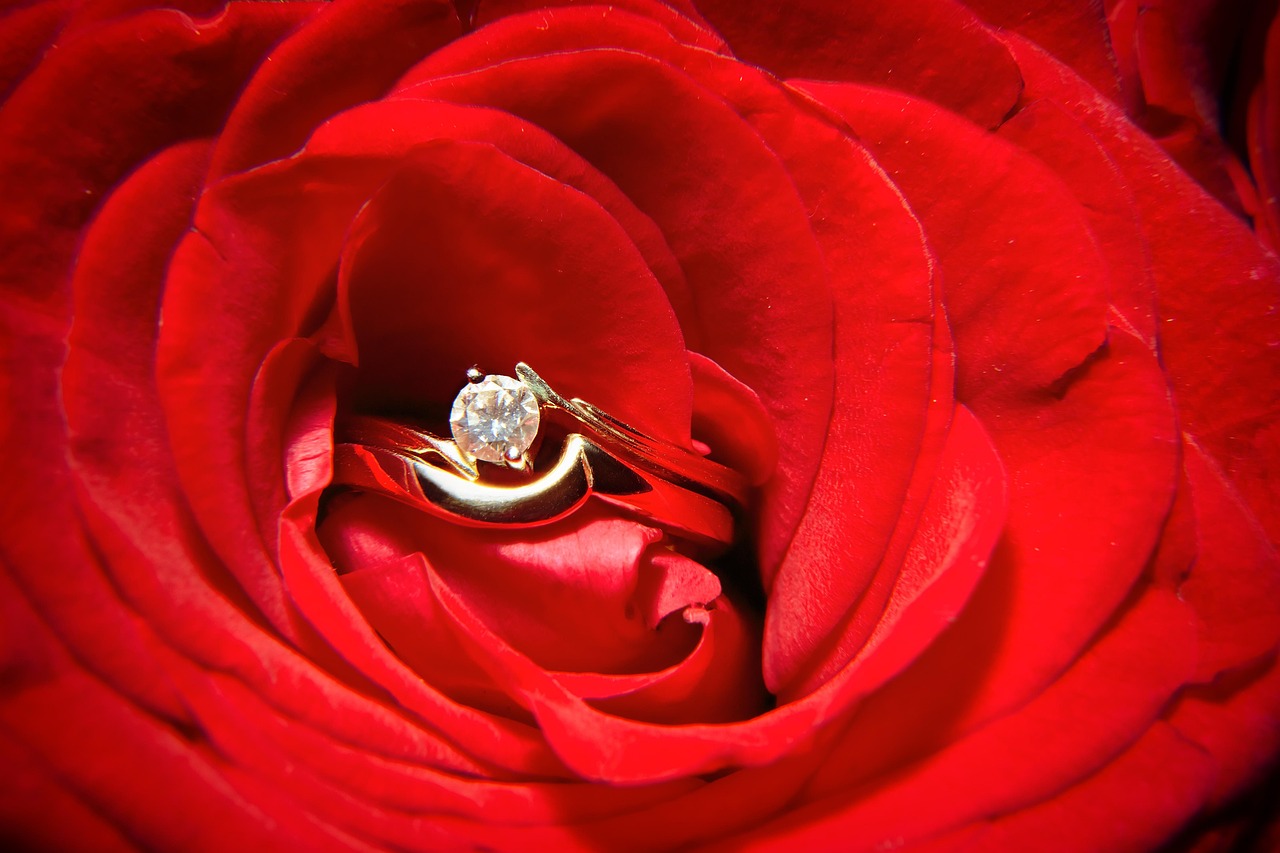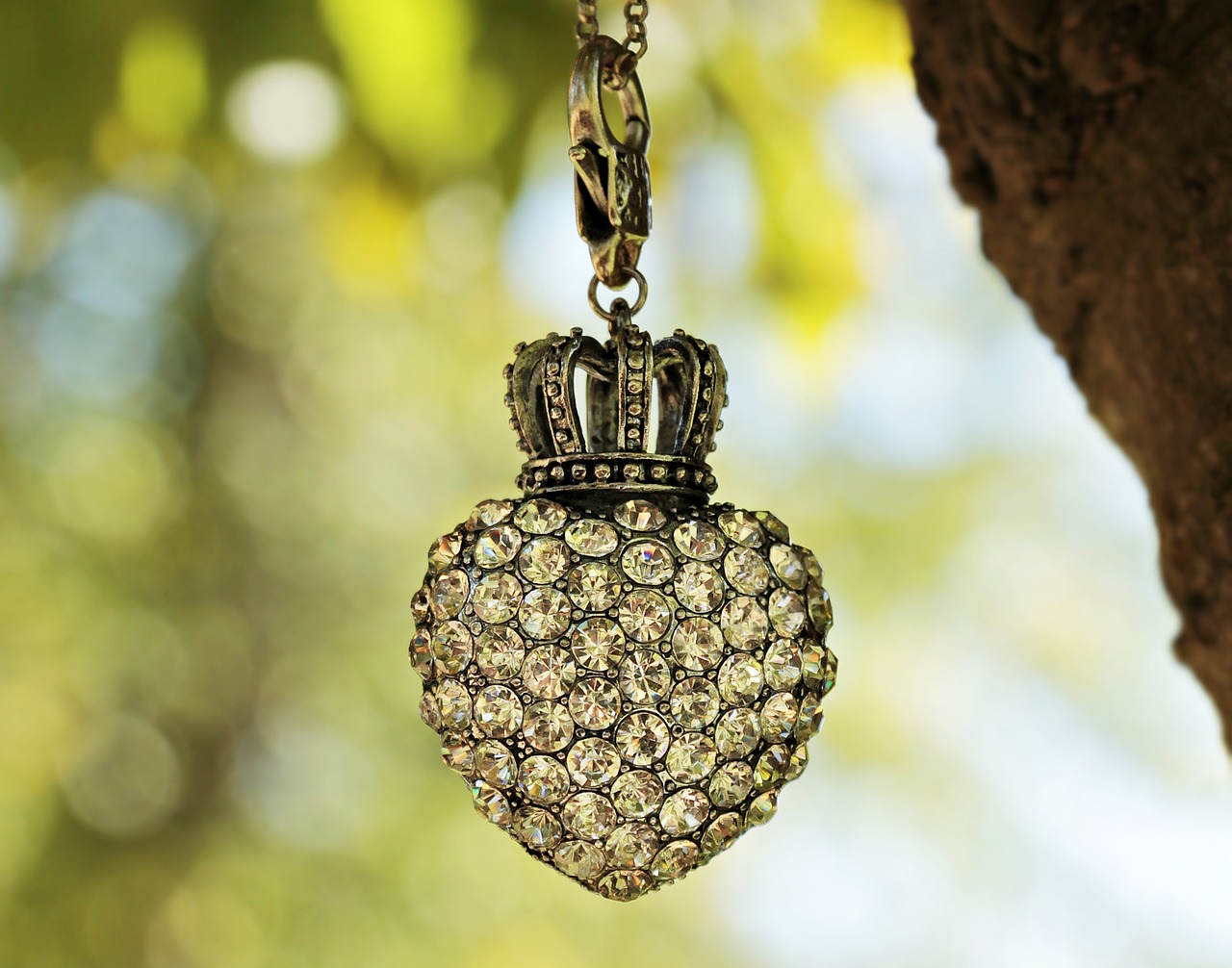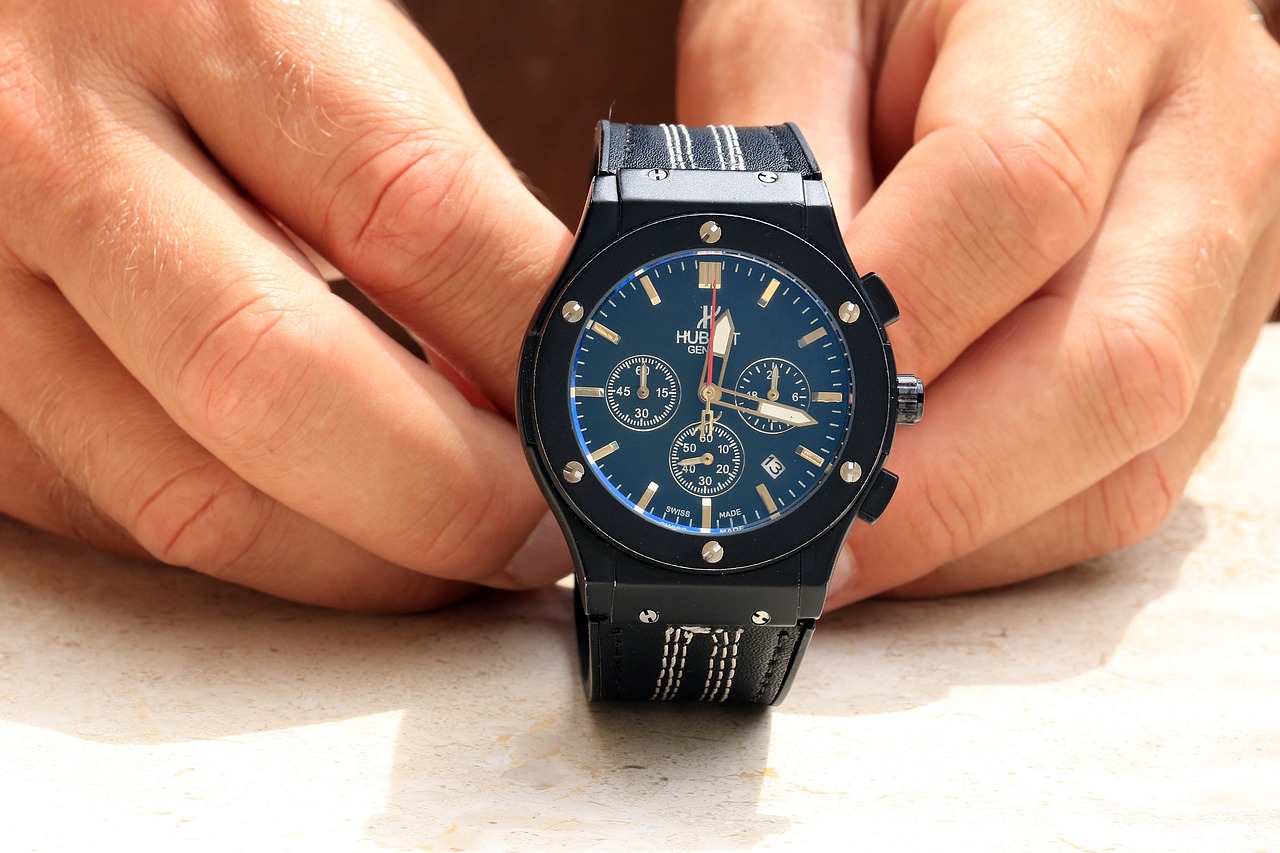Identifying and appraising antique jewelry for resale can be a rewarding yet challenging endeavor. This article aims to provide valuable insights into the intricate world of antique jewelry, focusing on the essential indicators of value, current market trends, and practical tips for successful transactions. By understanding these elements, you can enhance your ability to recognize valuable pieces and maximize your profits.
To determine the worth of antique jewelry, it is crucial to consider several key factors:
- Historical Significance: Pieces with a rich history or connection to notable events tend to fetch higher prices.
- Craftsmanship: The level of artistry and skill involved in creating the piece can greatly influence its value.
- Materials Used: Jewelry made from precious metals and rare gemstones is often more valuable.
Determining the age of antique jewelry is essential for accurate appraisal. Here are some methods to assess age:
- Hallmark Analysis: Examining hallmarks can provide insights into the maker and the time period of the jewelry.
- Design Features: Recognizing specific design elements can help identify the historical era of the piece.
Hallmarks and signatures are critical for understanding the provenance of antique jewelry. Here’s how to interpret them effectively:
- Common Hallmarks: Familiarize yourself with hallmarks from different eras to aid in dating and authenticity verification.
- Understanding Maker’s Marks: Researching the jeweler’s identity can reveal valuable information regarding the piece’s quality and market value.
The quality of craftsmanship and materials can significantly impact a piece’s value. Consider the following:
- Quality of Workmanship: Look for intricate details and superior craftsmanship that indicate a higher value.
- Material Composition: Identify whether the piece contains precious metals like gold or platinum, which can enhance its worth.
Staying informed about market trends is vital for successful resale. Some popular trends include:
- Popular Styles: Styles such as Art Deco and Victorian are highly sought after by collectors.
- Desirable Materials: Certain materials, including rare gemstones, are currently in high demand.
Identifying reliable sources is crucial for acquiring valuable antique jewelry. Consider the following avenues:
- Estate Sales and Auctions: These events often feature unique pieces at reasonable prices.
- Online Marketplaces: Websites dedicated to antique jewelry can offer a wide range of options, but ensure you verify sellers’ reputations.
Authentication is key to ensuring the value of antique jewelry. Here are methods to verify authenticity:
- Professional Appraisal Services: Consulting with a certified appraiser can provide valuable insights into a piece’s authenticity and market value.
- DIY Authentication Techniques: Learn practical techniques to identify genuine antique pieces independently.
Being aware of potential pitfalls can save sellers from costly mistakes. Common errors include:
- Overvaluing Pieces Based on Sentiment: Emotional attachments can cloud judgment; objective valuation is essential.
- Neglecting Market Research: Failing to research can lead to undervaluing or overpricing items, impacting resale potential.
By understanding these various aspects of antique jewelry, you can navigate the resale market more effectively. Knowledge is power, and being well-informed will greatly enhance your chances of success.
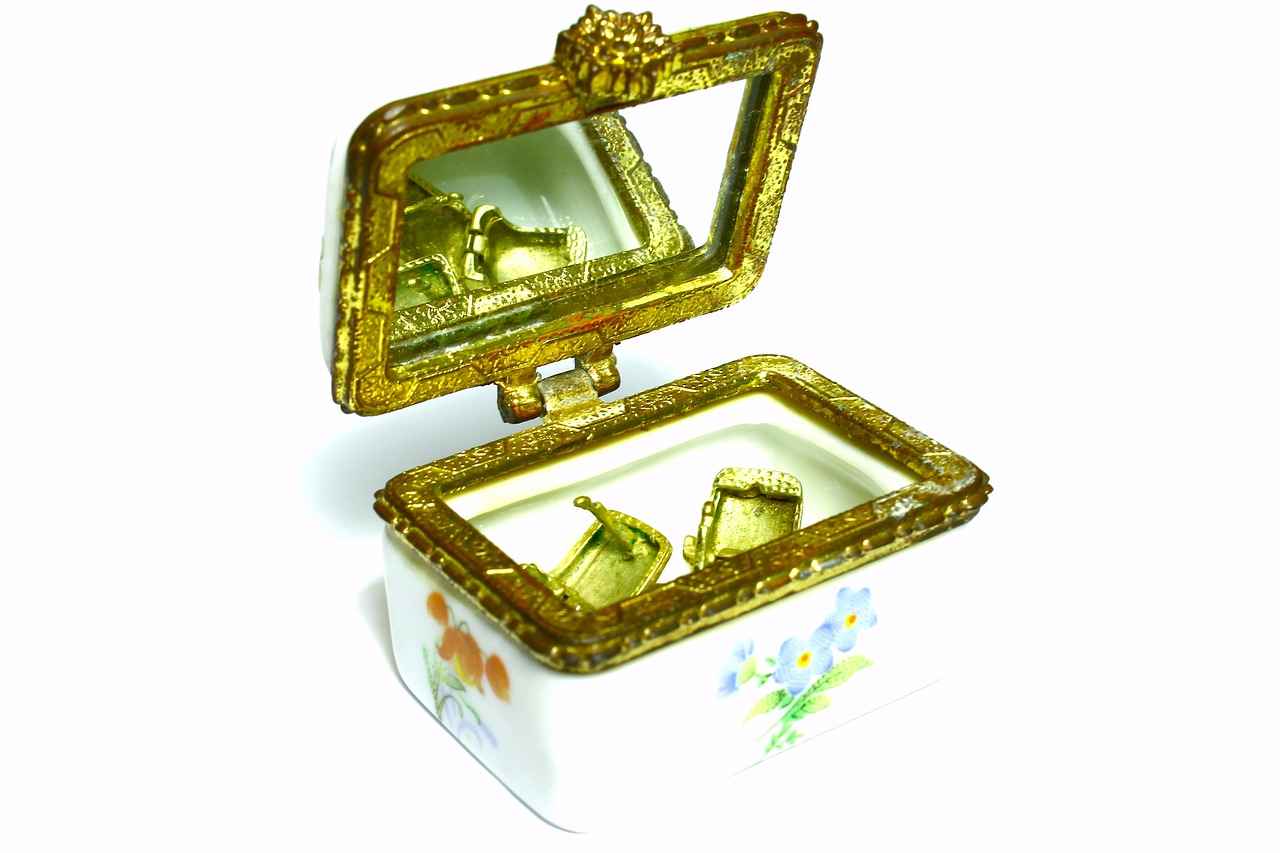
What Makes Antique Jewelry Valuable?
When it comes to antique jewelry, understanding its value is essential for both collectors and sellers. The worth of these pieces can vary significantly based on several factors. In this section, we will explore the key elements that contribute to the value of antique jewelry, providing a comprehensive guide for anyone interested in this fascinating market.
Antique jewelry is not just about aesthetics; its value is shaped by a combination of historical significance, craftsmanship, and materials used. Each of these factors plays a crucial role in determining the resale potential of a piece.
- Historical Significance: The story behind a piece can greatly enhance its value. Jewelry that has connections to historical events, famous figures, or specific cultural movements often commands higher prices. For example, pieces from the Victorian era are highly sought after due to their intricate designs and rich history.
- Craftsmanship: The quality of craftsmanship is another vital factor. Handcrafted pieces often showcase superior artistry compared to mass-produced items. Look for intricate detailing, unique designs, and the overall condition of the jewelry, as these elements can indicate a higher value.
- Materials Used: The type of materials in the jewelry also impacts its worth. Precious metals like gold and platinum, along with rare gemstones such as emeralds or diamonds, significantly elevate a piece’s value. Understanding the current market demand for these materials can help you assess potential resale prices.
Additionally, the provenance of the jewelry can add to its allure. Pieces that can be traced back to notable owners or events often have a premium attached to them.
Another important aspect to consider is the market trends. The popularity of certain styles can fluctuate over time. For instance, the Art Deco style has seen a resurgence in popularity, making such pieces more valuable in today’s market. Keeping an eye on these trends can help you make informed decisions when buying or selling antique jewelry.
Furthermore, understanding the emotional appeal of antique jewelry cannot be overlooked. Many buyers are drawn to the nostalgia and romanticism associated with vintage pieces, which can create a willingness to pay premium prices.
In summary, the value of antique jewelry is determined by a combination of its historical significance, craftsmanship, materials used, and current market trends. By thoroughly assessing these factors, you can gain a clearer understanding of what makes a piece truly valuable. Whether you are a collector, seller, or simply an enthusiast, this knowledge will empower you to navigate the antique jewelry market with confidence.
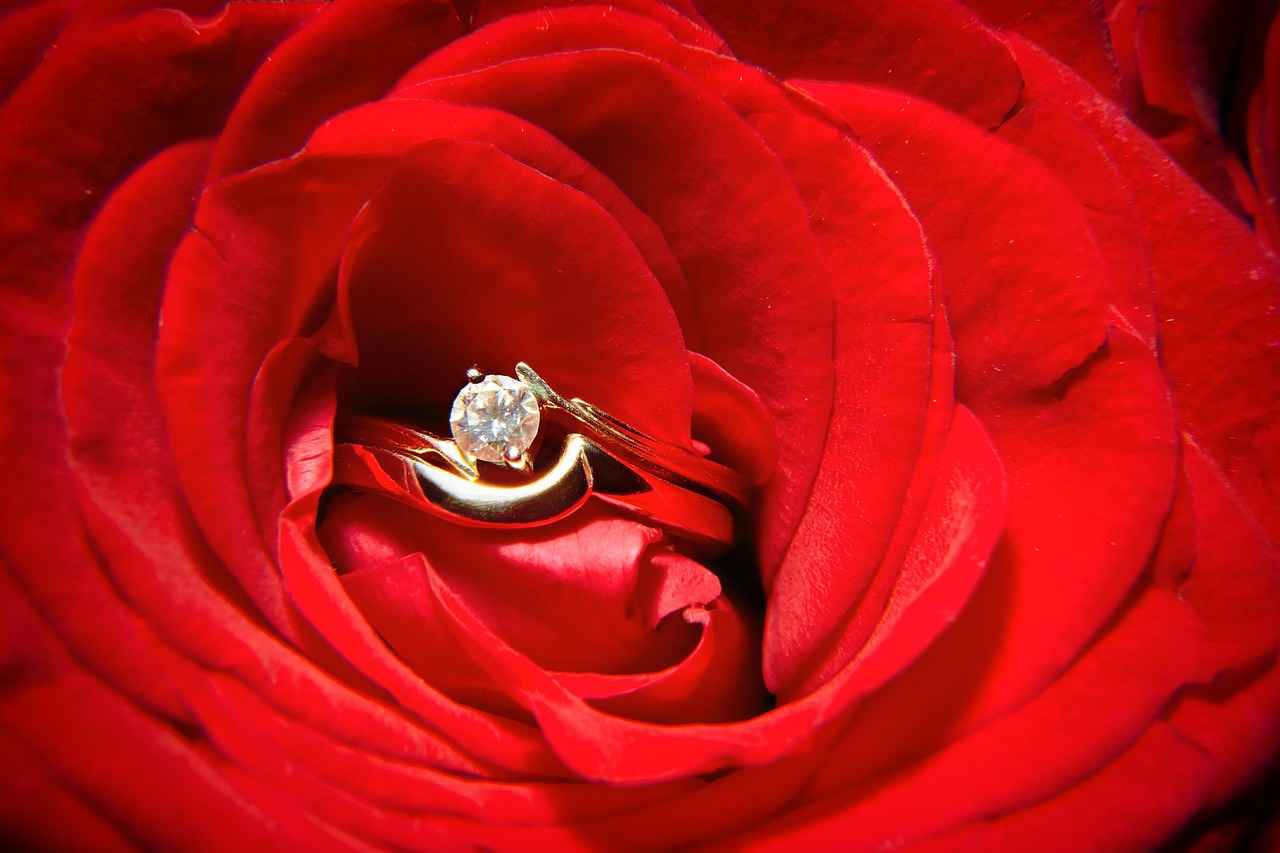
How to Assess the Age of Antique Jewelry?
Assessing the age of antique jewelry is a vital step in the appraisal process, as it significantly influences its value and desirability among collectors. Understanding the historical context of a piece can help in establishing its authenticity and market potential. This section delves into various methods used to determine the age of jewelry, including hallmark analysis, design features, and material evaluation.
Knowing the age of a jewelry piece is essential for several reasons. Firstly, it helps in accurately appraising the item, as different eras have distinct characteristics that influence value. Secondly, collectors often seek pieces from specific periods, making age a crucial factor in resale potential. Lastly, understanding the historical significance can enhance the narrative surrounding the piece, adding to its allure.
Several techniques can be employed to determine the age of antique jewelry:
- Hallmark Analysis: Hallmarks are stamps or markings on jewelry that provide information about the maker, metal content, and sometimes the year of production. By examining these markings, one can often pinpoint the era in which the piece was created.
- Design Features: Different periods in jewelry history are characterized by unique design elements. For instance, the intricate designs of Victorian jewelry contrast sharply with the geometric forms of Art Deco pieces. Familiarizing oneself with these styles can aid in dating a piece.
- Material Evaluation: The materials used in jewelry can also indicate its age. For example, certain gemstones and metals were more popular in specific eras. Understanding these trends can provide clues about the period of manufacture.
Hallmarks and signatures serve as fingerprints for jewelry pieces, offering insights into their origins. Each country has its hallmarking system, and recognizing these can significantly enhance the appraisal process.
- Common Hallmarks to Look For: Familiarize yourself with hallmarks that are prevalent in different historical periods. For instance, the presence of a specific assay office mark can indicate the country of origin and its corresponding era.
- Understanding Maker’s Marks: Maker’s marks can reveal the identity of the jeweler, which is crucial for establishing the piece’s provenance. Researching these marks can provide valuable insights into the craftsmanship and potential value of the jewelry.
The quality of craftsmanship and the materials used in a piece of jewelry can significantly impact its age and value. Antique jewelry often showcases superior craftsmanship that reflects the techniques and styles of its time. Evaluating the intricacy of design, the quality of gemstones, and the type of metal can provide further clues to the piece’s age.
Accurate age assessment not only enhances the credibility of the appraisal but also increases the piece’s marketability. Collectors and buyers are often willing to pay a premium for items that are well-documented and verified. Furthermore, a thorough understanding of a piece’s age can provide insights into its care and maintenance, ensuring longevity and preserving its value.
In conclusion, determining the age of antique jewelry is a multifaceted process that involves hallmark analysis, design evaluation, and material assessment. By employing these methods, one can gain a deeper understanding of the piece, ensuring a more accurate appraisal and enhancing its appeal in the resale market.
Recognizing Hallmarks and Signatures
When it comes to antique jewelry, understanding the hallmarks and signatures is essential for both collectors and sellers. These markings serve as a historical record, providing invaluable information about the piece’s origin, maker, and age. This section delves into the intricacies of interpreting these markings to ensure accurate identification and valuation.
Hallmarks are official marks stamped on precious metals, while signatures refer to the unique identifiers of the jeweler or designer. Both are critical in establishing the authenticity and value of antique jewelry. Understanding these markings can significantly influence your appraisal process.
Interpreting hallmarks requires a keen eye and some knowledge of various marking systems used throughout history. Here are some essential points to consider:
- Country of Origin: Different countries have specific hallmarking systems. For instance, British hallmarks include a series of symbols that denote the maker, the year, and the purity of the metal.
- Metal Purity: Hallmarks often indicate the metal’s purity. For example, a mark of 925 signifies sterling silver, while 750 indicates 18-karat gold.
- Era of Production: Certain hallmarks are exclusive to specific time periods. Familiarizing yourself with these can help date the piece accurately.
Signatures provide insight into the jeweler’s identity and reputation. A well-known maker can significantly enhance a piece’s value. Here’s how to research signatures:
- Research the Jeweler: Look up the jeweler’s history, reputation, and the types of pieces they are known for. This can be done through online databases or antique jewelry references.
- Compare with Known Examples: Cross-reference the signature with verified pieces from the same maker to confirm authenticity.
Familiarizing yourself with common hallmarks can make the identification process easier. Here are some notable examples:
| Hallmark | Description |
|---|---|
| Anchor | Indicates jewelry made in Birmingham, England. |
| Lion Passant | Signifies sterling silver in the UK. |
| Gold Standard Mark | Indicates the carat of gold used, such as 585 for 14K. |
The presence of hallmarks and signatures can greatly affect a piece’s market value. Jewelry that features recognizable hallmarks from esteemed makers often commands higher prices. Therefore, it is crucial to:
- Document Findings: Keep a record of all hallmarks and signatures found on the piece.
- Consult Experts: When in doubt, seek the opinion of a professional appraiser who specializes in antique jewelry.
By understanding and effectively interpreting hallmarks and signatures, you can enhance your ability to identify valuable antique jewelry. This knowledge not only aids in accurate appraisal but also enriches your appreciation of the craftsmanship and history behind each piece.
Common Hallmarks to Look For
When it comes to identifying valuable antique jewelry, hallmarks play a crucial role. These small but significant markings can provide essential insights into a piece’s age, origin, and authenticity. Understanding the hallmarks that are prevalent in different eras can greatly assist collectors and sellers alike in dating pieces accurately and establishing their value.
Hallmarks serve as a form of identification for jewelry, indicating the metal content, the maker, and sometimes even the year of production. Each country has its own system of hallmarks, which can include symbols, letters, and numbers. Recognizing these markings is vital for anyone looking to resell antique jewelry effectively.
Different historical periods have distinct styles and hallmark characteristics. Here are some important ones to look for:
- Victorian Era (1837-1901): Look for the British hallmark system, which includes a lion passant for sterling silver and a crown for gold. The date letter can tell you the year of manufacture.
- Art Nouveau (1890-1910): This era often features more artistic and fluid designs. Hallmarks may include the maker’s mark, often in a stylized font.
- Art Deco (1920-1935): Look for geometric designs and the use of platinum. Hallmarks from this period may include the initials of the manufacturer.
- Mid-Century Modern (1940-1960): Hallmarks often include company logos, which can help identify popular brands like Trifari or Monet.
To effectively identify hallmarks, consider the following steps:
- Research: Familiarize yourself with common hallmarks from different periods. Resources like jewelry books or online databases can be invaluable.
- Examine the Piece: Use a magnifying glass to inspect the jewelry closely. Hallmarks can be tiny and may require careful viewing.
- Consult Experts: If in doubt, consider reaching out to a professional appraiser or a jeweler who specializes in antique pieces.
Understanding the significance of hallmarks can significantly impact the resale value of antique jewelry. A piece with a well-documented hallmark can fetch a much higher price than one without. This is because hallmarks not only confirm authenticity but also provide a narrative about the piece’s history, making it more desirable to collectors.
In summary, recognizing common hallmarks in antique jewelry is essential for anyone interested in collecting or reselling these valuable pieces. By understanding the historical context of these markings, you can make informed decisions that enhance your investment and appreciation of antique jewelry.
Understanding Maker’s Marks
When delving into the world of antique jewelry, one cannot overlook the significance of maker’s marks. These small yet powerful symbols serve as a window into the past, revealing not only the identity of the jeweler but also their reputation and craftsmanship. Understanding and researching these marks is essential for anyone looking to accurately assess the value of a piece.
Maker’s marks are unique symbols or initials stamped onto jewelry items, often found on the inside of rings or on clasps of necklaces and bracelets. They indicate the manufacturer or designer of the piece, providing critical information about its origins. By identifying these marks, collectors and sellers can trace the history of the jewelry, which is vital for valuation.
The presence of a maker’s mark can significantly enhance a piece’s value. Renowned jewelers, such as Tiffany & Co. or
Researching maker’s marks involves several steps:
- Identify the Mark: Start by examining the mark closely. Use a magnifying glass if necessary to ensure you can see the details.
- Consult Reference Materials: Books, online databases, and jewelry appraisal websites can provide insights into different makers and their marks.
- Join Collector Groups: Engaging with communities of jewelry collectors can offer valuable information and resources for identifying and understanding various marks.
Some maker’s marks are more recognizable than others. Here are a few notable examples:
| Jeweler | Mark | Era |
|---|---|---|
| Tiffany & Co. | “T & Co.” | 1837-Present |
| Cartier | “Cartier” | 1847-Present |
| Van Cleef & Arpels | “VCA” | 1906-Present |
Understanding the impact of maker’s marks on jewelry valuation is crucial. A piece from a well-known jeweler can significantly increase its market value. For example, a vintage Tiffany & Co. bracelet can fetch thousands of dollars, while a similar piece from an unknown maker might only be worth a fraction of that amount. Therefore, thorough research into the maker’s mark can help sellers accurately price their items and maximize potential profits.
In conclusion, maker’s marks are more than just decorative elements; they are essential indicators of a piece’s history and value. By taking the time to research and understand these marks, jewelry enthusiasts can make informed decisions about buying, selling, and appraising antique jewelry. This knowledge not only enhances the appreciation of the art form but also ensures that valuable pieces are recognized and preserved for future generations.
Evaluating Craftsmanship and Materials
When it comes to antique jewelry, craftsmanship and materials are pivotal in determining a piece’s overall value. Understanding how to evaluate these elements can significantly enhance your ability to appraise and resell antique jewelry effectively.
The quality of craftsmanship can often be a reflection of the era in which the piece was made. Skilled artisans from different periods employed unique techniques that can be indicative of a jewelry item’s age and value. Here are some aspects to consider:
- Attention to Detail: Examine the intricacies of the design. High-quality pieces often feature meticulous detailing, such as engraving or filigree work.
- Construction Techniques: Look for signs of handcrafting versus mass production. Handmade pieces typically exhibit slight imperfections that add to their charm and authenticity.
- Durability: Assess the overall sturdiness of the piece. Jewelry that has maintained its integrity over time is often of higher quality.
The choice of materials used in antique jewelry plays a critical role in its valuation. Here are some key materials to consider:
- Precious Metals: Gold, silver, and platinum are highly sought after. The karat or purity level of these metals can significantly impact value.
- Gemstones: Rare gemstones, especially those with historical significance, can elevate a piece’s worth. Look for certified stones that have been appraised for authenticity.
- Unique Materials: Some antique jewelry features unusual materials, such as ivory or coral, which can add to their uniqueness and desirability.
To evaluate the craftsmanship effectively, consider these aspects:
1. Examine the Joints: Check how the pieces are connected. Well-made jewelry will have seamless joints that are not easily visible.2. Inspect the Clasp: A sturdy clasp is a sign of quality. It should function smoothly and hold the piece securely.3. Look for Wear Patterns: Authentic antique jewelry will show signs of wear that reflect its age, enhancing its character.
When assessing materials, keep the following in mind:
- Testing for Purity: Use acid tests or electronic testers for metals to confirm their purity.
- Gemstone Verification: Employ gemological tools or seek professional appraisals to verify the authenticity of gemstones.
- Research Historical Context: Understanding the historical context can help you identify the materials used and their significance in the piece’s value.
In conclusion, evaluating craftsmanship and materials is essential for accurately determining the value of antique jewelry. By paying close attention to these elements and utilizing practical assessment techniques, you can make informed decisions when buying or reselling antique pieces. This knowledge not only enhances your appraisal skills but also enriches your appreciation for the artistry and history behind each unique item.
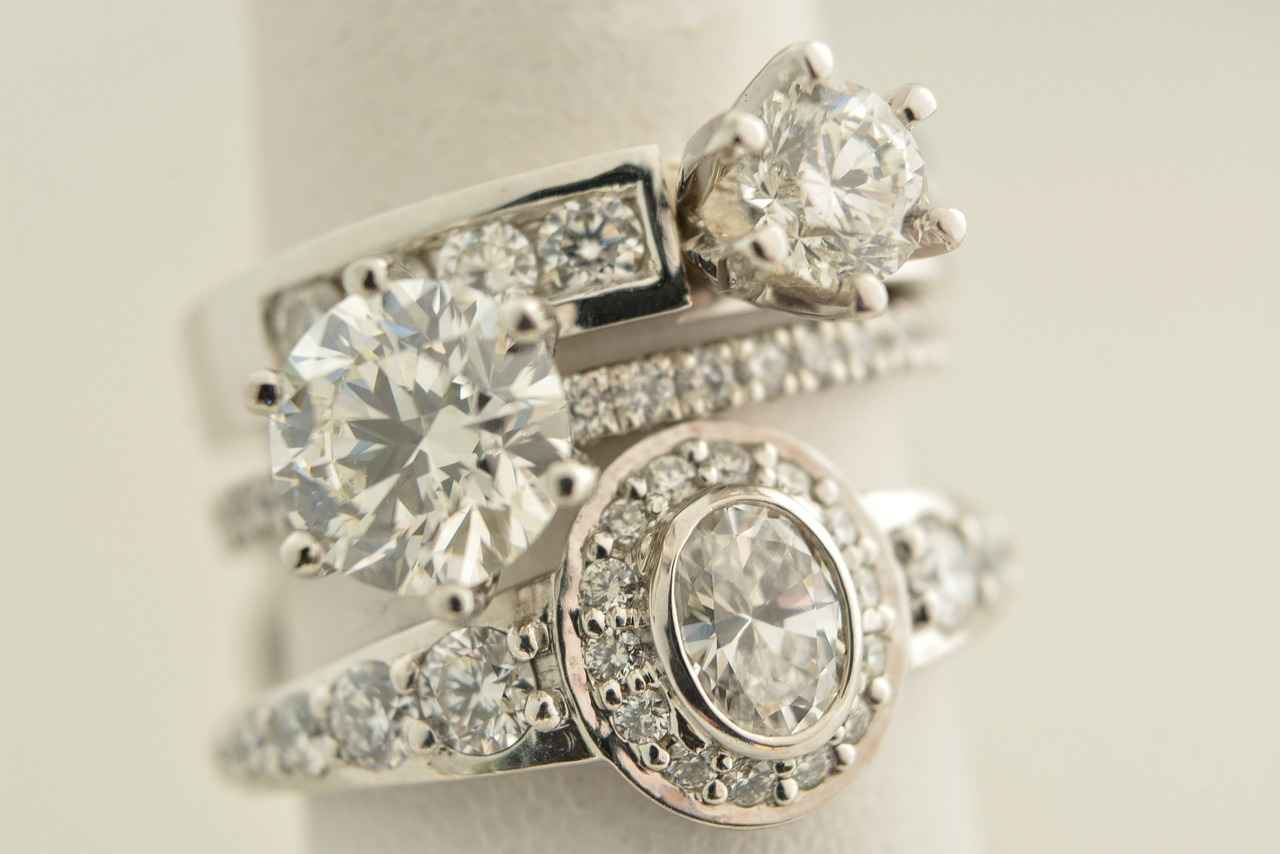
What Are the Current Trends in Antique Jewelry Resale?
In the dynamic world of antique jewelry resale, staying informed about current market trends is vital for both collectors and investors. As preferences evolve, understanding which styles and materials are in demand can significantly enhance the resale potential of your pieces. This section delves into the popular styles and materials that are currently captivating the attention of buyers.
Antique jewelry is often categorized into distinct styles that reflect different historical periods. Among these, the Art Deco and Victorian styles stand out as particularly sought after.
- Art Deco: Known for its geometric shapes and bold colors, Art Deco jewelry is a favorite among collectors. Its unique designs often feature platinum and diamond settings, making them highly desirable.
- Victorian: This style is characterized by intricate designs and the use of gold and gemstones. Victorian pieces often tell a story, which adds to their allure and value.
- Edwardian: Known for its elegance and use of filigree, Edwardian jewelry often incorporates diamonds and pearls, appealing to those who appreciate delicate craftsmanship.
Each of these styles not only reflects the era in which they were created but also resonates with the aesthetic preferences of today’s collectors, making them valuable in the resale market.
The materials used in antique jewelry play a crucial role in determining its value. Currently, several materials are particularly coveted:
- Gold: Always a classic choice, gold jewelry—especially pieces made from 18k or 22k gold—is highly sought after due to its inherent value and timeless appeal.
- Platinum: Known for its durability and rarity, platinum is increasingly popular among collectors, especially in vintage engagement rings and fine jewelry.
- Rare Gemstones: Stones such as emeralds, rubies, and sapphires are not only beautiful but also command high prices in the market. Collectors are particularly interested in pieces featuring these stones, especially when they are of exceptional quality.
Understanding these material trends can guide sellers in selecting pieces that are likely to attract buyers and fetch higher prices.
Market trends are not static; they fluctuate based on consumer preferences, economic conditions, and even fashion trends. Keeping an eye on these changes is essential for anyone looking to successfully resell antique jewelry. For instance, the rising popularity of sustainable and ethically sourced materials has led to an increased interest in vintage pieces that utilize such elements.
Additionally, social media platforms and online marketplaces have transformed how collectors discover and purchase antique jewelry. The accessibility of information allows potential buyers to be more informed about what styles and materials are trending, which can greatly influence their purchasing decisions.
By staying updated on these trends, sellers can better position their inventory to meet market demands, ultimately leading to more successful transactions in the resale market.
Popular Styles in Antique Jewelry
When it comes to antique jewelry, certain styles stand out not only for their aesthetic appeal but also for their significant market value. Among these styles, Art Deco and Victorian are particularly sought after by collectors and enthusiasts alike. This section delves into the unique characteristics of these styles, exploring their historical significance, design elements, and the reasons behind their enduring popularity.
Originating in the 1920s and 1930s, Art Deco jewelry is characterized by its bold geometric shapes, vibrant colors, and the use of innovative materials. This style emerged as a response to the ornate designs of the previous era, embracing a more streamlined and modern aesthetic.
- Geometric Patterns: Art Deco pieces often feature symmetrical designs that draw inspiration from architecture and industrial design.
- Colorful Gemstones: The use of colored gemstones, such as emeralds, sapphires, and rubies, adds a vibrant touch to these pieces.
- Materials: Art Deco jewelry frequently incorporates platinum and diamonds, enhancing its luxury appeal.
Collectors are particularly drawn to the craftsmanship and innovation of Art Deco jewelry, making it a valuable investment in the antique market.
Victorian jewelry, which flourished during the reign of Queen Victoria from 1837 to 1901, is celebrated for its romanticism and intricate designs. This era saw a variety of styles, each reflecting the changing tastes and social norms of the time.
- Sentimental Motifs: Victorian jewelry often features motifs such as hearts, flowers, and lockets, symbolizing love and remembrance.
- Materials Used: Gold was the predominant metal, with gemstones like garnets and pearls commonly used.
- Craftsmanship: The attention to detail and the use of techniques like enameling and filigree showcase the artistry of the period.
The emotional connection and historical context of Victorian jewelry contribute to its high resale value, making it a favorite among collectors.
The appeal of both Art Deco and Victorian styles significantly influences their resale value. Collectors are often willing to pay a premium for pieces that exhibit the distinctive characteristics of these eras. Factors such as condition, rarity, and provenance also play critical roles in determining value.
- Condition: Well-preserved pieces tend to fetch higher prices, making careful maintenance essential for resale.
- Rarity: Unique or limited-edition pieces are more desirable, often leading to competitive bidding among collectors.
- Provenance: A documented history of ownership can enhance a piece’s value, especially if it belonged to a notable figure.
As trends in antique jewelry continue to evolve, the enduring allure of Art Deco and Victorian styles ensures they remain highly sought after in the market. Collectors and investors alike should keep these factors in mind when assessing the potential value of their antique jewelry pieces.
Materials That Enhance Value
When it comes to antique jewelry, the choice of materials can significantly influence its value. Understanding which materials are currently in demand can help sellers and collectors make informed decisions. This section delves into the most sought-after materials and their impact on the market.
The desirability of materials in antique jewelry often stems from their rarity, durability, and aesthetic appeal. Collectors and investors alike are drawn to pieces that feature high-quality materials, as these often reflect superior craftsmanship and historical significance.
Gold has long been regarded as a symbol of wealth and status. Its intrinsic value is determined by factors such as purity and weight. Antique jewelry made from 18-karat or 22-karat gold is especially prized. Additionally, the color of the gold—whether yellow, white, or rose—can also affect its appeal in the current market.
Among the precious metals, platinum stands out for its rarity and durability. It is often associated with high-end jewelry and is less prone to tarnishing than other metals. This makes platinum pieces not only visually stunning but also practical for everyday wear. Collectors often seek out antique jewelry featuring platinum settings, especially when adorned with precious stones.
When it comes to gemstones, rarity plays a crucial role in determining value. Diamonds, emeralds, rubies, and sapphires are among the most sought-after stones in antique jewelry. However, lesser-known gemstones like alexandrite and paraiba tourmaline have gained popularity due to their unique colors and limited availability. The quality of the gemstone—its cut, clarity, color, and carat weight—also significantly affects the overall value of the piece.
- Market Trends: The popularity of certain materials can fluctuate based on current fashion trends and collector interests.
- Historical Significance: Jewelry that features materials linked to specific historical periods or events often commands higher prices.
- Craftsmanship: The skill level of the artisan who created the piece can enhance the value of the materials used.
To assess the value of materials in antique jewelry, consider the following tips:
1. Research the market: Stay updated on current trends and prices for specific materials.2. Examine hallmarks: Look for stamps that indicate the metal's purity and origin.3. Seek expert advice: Consult with a professional appraiser to gain insights into the piece's materials and overall value.
In summary, understanding the materials that enhance the value of antique jewelry is essential for both collectors and sellers. By focusing on high-quality materials like gold, platinum, and rare gemstones, individuals can make informed decisions that maximize their investment potential. Keeping abreast of market trends and seeking expert guidance can further enhance the appraisal process, ensuring that valuable pieces are recognized and appreciated.
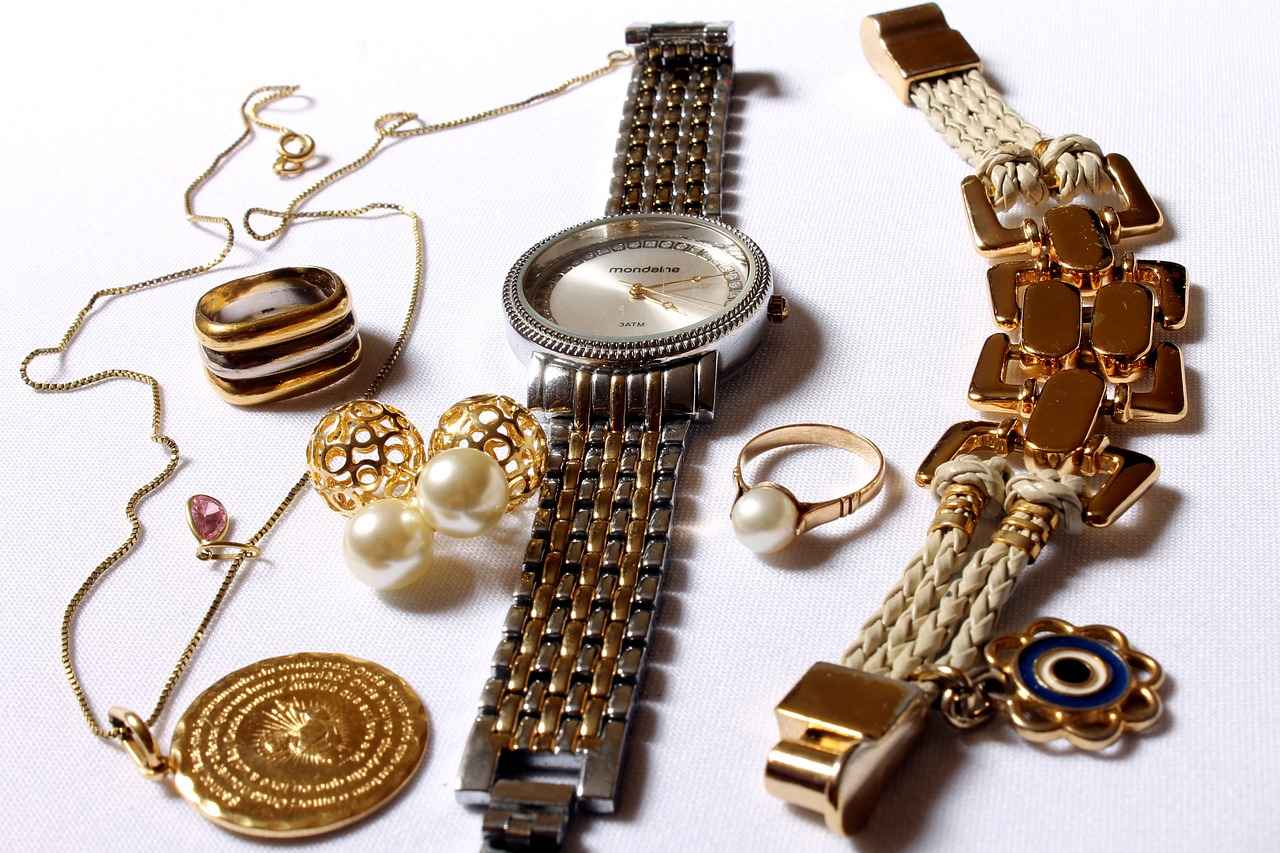
Where to Find Antique Jewelry for Resale?
Finding reliable sources for purchasing antique jewelry is essential for anyone looking to resell these unique pieces. The market for antique jewelry can be both rewarding and challenging, making it imperative to identify trustworthy avenues to acquire valuable items. This section explores various options, including auctions, estate sales, and online marketplaces, to help you locate exquisite antique jewelry.
Auction houses are a popular choice for sourcing antique jewelry due to their curated selections and expert evaluations. Many auction houses specialize in antiques, providing a platform where collectors and sellers converge. Attending an auction not only allows you to view the jewelry in person but also gives you the opportunity to acquire pieces at potentially lower prices than retail. Here are some tips for navigating auctions:
- Research the Auction House: Ensure it has a good reputation and specializes in antique jewelry.
- Review Catalogs: Study the auction catalog beforehand to identify pieces of interest.
- Set a Budget: Determine your maximum bid to avoid overspending in the heat of the moment.
Estate sales can be treasure troves for antique jewelry enthusiasts. Often, these sales occur when families are liquidating estates, presenting a chance to find one-of-a-kind items. Here are some strategies for successful estate sale hunting:
- Arrive Early: Get there early to have the best selection of items.
- Inspect Items Carefully: Always check for signs of authenticity and condition.
- Negotiate: Don’t hesitate to negotiate prices, especially if you’re buying multiple pieces.
The rise of the internet has revolutionized how we shop for antique jewelry. Numerous online marketplaces offer a vast array of antique pieces from around the globe. However, it’s crucial to shop wisely. Here are some tips to ensure safe transactions:
- Choose Reputable Platforms: Websites like eBay, Etsy, and specialized antique jewelry sites often feature seller ratings and reviews.
- Read Descriptions Thoroughly: Pay attention to details regarding the item’s condition, age, and authenticity.
- Ask Questions: Don’t hesitate to contact sellers for additional information or photographs.
Regardless of where you purchase antique jewelry, several factors should be considered:
- Provenance: Knowing the history of the piece can enhance its value.
- Condition: Assess the jewelry’s condition, as restoration can impact value.
- Market Trends: Stay informed about current trends in antique jewelry to make informed purchasing decisions.
In summary, finding reliable sources for antique jewelry involves a combination of traditional avenues like auctions and estate sales, as well as modern platforms like online marketplaces. By employing thorough research and strategic buying practices, you can successfully locate valuable pieces that hold significant resale potential.
Exploring Estate Sales and Auctions
Estate sales and auctions are treasure troves for those seeking unique antique jewelry. These events often feature items with rich histories and distinctive designs that can significantly enhance your collection or investment portfolio. However, navigating these sales requires a keen eye and strategic approach. Below are some essential tips to help you find high-quality antique jewelry at reasonable prices.
When exploring estate sales, it’s crucial to arrive early to get the best selection. Here are some tips to maximize your experience:
- Research the Estate Sale: Before attending, gather information about the estate and its contents. Knowing what types of jewelry are expected can help you focus your search.
- Inspect the Jewelry Carefully: Look for signs of wear and tear, such as scratches or missing stones. Authentic antique jewelry often shows some signs of aging, which can enhance its character.
- Ask Questions: Don’t hesitate to inquire about the piece’s history. Sellers may provide valuable insights that can affect the item’s value.
Bidding at auctions can be both exhilarating and intimidating. To improve your chances of winning valuable pieces, consider these strategies:
- Set a Budget: Determine your maximum bid beforehand to avoid overspending in the heat of the moment.
- Understand the Auction Process: Familiarize yourself with the auctioneer’s terms and conditions, including fees and bidding increments.
- Observe Before Bidding: Watch how other bidders behave. This can give you insights into the competition and help you gauge the item’s value.
Once you find a piece that catches your eye, evaluating its authenticity and value is crucial. Here are some evaluation tips:
- Check for Hallmarks: Look for maker’s marks or hallmarks that indicate the jewelry’s origin and authenticity. Research these marks to determine their significance.
- Assess the Quality of Materials: High-quality antique jewelry is often made from precious metals like gold or platinum and may feature rare gemstones. Understanding the materials can help you gauge value.
- Consider the Design and Craftsmanship: Take note of the design style and craftsmanship. Unique designs or intricate work can significantly enhance a piece’s value.
Negotiating can be an effective way to secure a better deal on antique jewelry. Here are some tactics:
- Be Polite and Respectful: Building rapport with the seller can lead to better negotiation outcomes.
- Present Your Research: If you’ve done your homework, use this information to justify your offer. Showing knowledge can instill confidence in your negotiation.
- Be Prepared to Walk Away: Sometimes, the best negotiations happen when the seller knows you are willing to leave if the price isn’t right.
By employing these strategies and insights, you can navigate estate sales and auctions more effectively, increasing your chances of finding high-quality antique jewelry at reasonable prices. Remember, patience and knowledge are your best tools in this journey!
Online Marketplaces for Antique Jewelry
The world of antique jewelry is vast and intriguing, offering collectors and enthusiasts a chance to acquire unique pieces with rich histories. One of the most convenient ways to explore this market is through online marketplaces. With numerous platforms available, it’s essential to know where to look and how to ensure safe transactions.
Online marketplaces provide a convenient and extensive selection of antique jewelry. They allow buyers to browse collections from the comfort of their homes, compare prices, and access pieces that may not be available locally. However, not all platforms are created equal, and understanding the best practices for shopping online is vital.
- Etsy: Known for handmade and vintage items, Etsy features many sellers offering antique jewelry. Always check seller reviews and ratings.
- eBay: A popular auction site where you can find a variety of antique jewelry. Look for listings with detailed descriptions and high seller ratings.
- Ruby Lane: Specializing in antiques and vintage items, Ruby Lane is a trusted platform with a focus on quality. Each seller has a shop, allowing for a consistent shopping experience.
- 1stDibs: This luxury marketplace offers high-end antique jewelry. Prices may be higher, but the quality and authenticity are typically guaranteed.
When purchasing antique jewelry online, following these practical tips can help ensure a safe and satisfying experience:
- Research the Seller: Always investigate the seller’s background, including their reputation, return policy, and history of transactions.
- Request Detailed Information: Don’t hesitate to ask for additional photos or details about the piece. A reputable seller will gladly provide this information.
- Check for Authenticity Guarantees: Look for sellers that offer certificates of authenticity or appraisals. This can provide peace of mind regarding your purchase.
- Understand the Return Policy: Familiarize yourself with the platform’s and seller’s return policies. Knowing your options in case the item is not as described is crucial.
- Use Secure Payment Methods: Opt for payment options that offer buyer protection, such as PayPal or credit cards, to safeguard your transaction.
Identifying quality antique jewelry requires a keen eye. Here are some tips to help you assess a piece:
- Examine the Craftsmanship: Look for intricate details, quality of materials, and overall craftsmanship. High-quality pieces often have a level of artistry that reflects their age.
- Research Hallmarks: Familiarize yourself with common hallmarks and maker’s marks. This knowledge can help you determine the authenticity and origin of the piece.
- Understand Market Trends: Stay updated on current trends in antique jewelry. Knowing what styles and materials are in demand can help you make informed purchasing decisions.
By utilizing reputable online marketplaces and following these tips, you can enhance your chances of finding valuable antique jewelry while ensuring a safe and secure shopping experience. The thrill of discovering unique pieces is part of what makes collecting antique jewelry so rewarding.
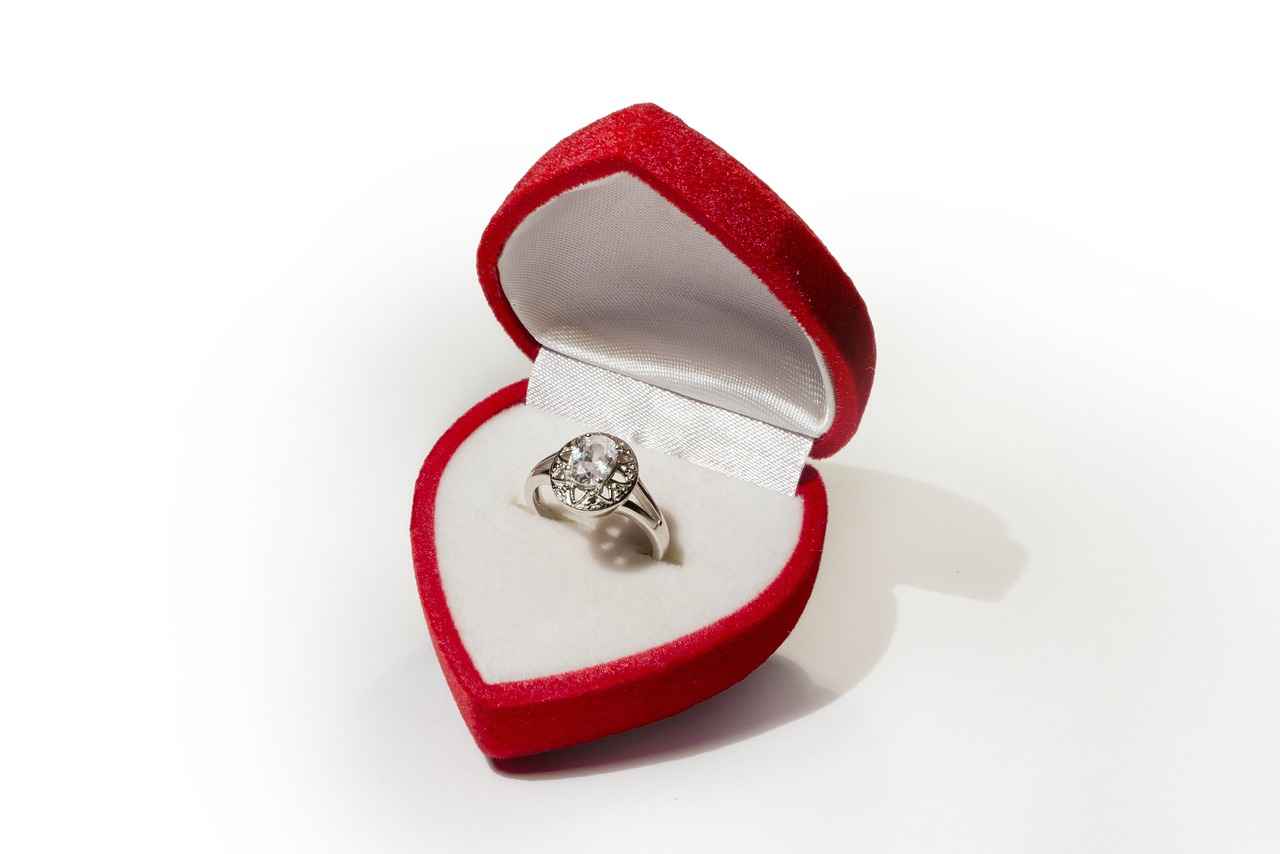
How to Authenticate Antique Jewelry?
Authenticating antique jewelry is crucial for ensuring its value and desirability in the resale market. As a seller or collector, understanding the methods and tools available for verifying authenticity can safeguard your investment and enhance your reputation. This section delves into various approaches to authenticate antique jewelry, providing valuable insights for both novices and seasoned enthusiasts.
The significance of authentication cannot be overstated. Authentic pieces often command higher prices and attract serious buyers, while replicas or misrepresented items can lead to significant financial losses. Additionally, the integrity of the antique jewelry market relies on accurate representation, making it essential for sellers to ensure their pieces are genuine.
- Professional Appraisal Services: Consulting a certified appraiser is one of the most reliable methods for authentication. These experts can examine the piece’s characteristics, including its materials, craftsmanship, and historical context.
- Researching Hallmarks and Maker’s Marks: Many antique pieces bear hallmarks or maker’s marks that provide insights into their origin. Understanding how to interpret these markings can help establish authenticity.
- Examining Craftsmanship: Authentic antique jewelry often displays superior craftsmanship. Look for signs of handwork, such as irregularities in settings or intricate detailing that mass-produced items typically lack.
- Material Analysis: Conducting a material analysis can reveal whether the metals and stones used are consistent with the era in which the jewelry was made. For instance, certain alloys or gemstone cuts may be exclusive to specific time periods.
If you prefer to authenticate jewelry independently, several DIY techniques can assist you:
- Visual Inspection: Carefully inspect the piece for signs of wear that indicate age. Look for patina, which develops over time and is often absent in newer pieces.
- Magnification: Use a jeweler’s loupe to examine the details closely. Authentic pieces often have intricate designs that are hard to replicate.
- Testing for Metal Purity: Conduct simple tests to determine the metal’s purity. For instance, a magnet can help identify counterfeit metals, as gold and platinum are not magnetic.
Several tools can aid in the authentication process:
- Gem Tester: This device can help identify the type of gemstones used in the piece, ensuring they are consistent with the jewelry’s claimed origin.
- Electronic Gold Tester: This tool can accurately measure the karat of gold, helping to confirm its authenticity.
- Reference Books and Online Resources: Utilize books and websites dedicated to antique jewelry to cross-reference your findings and gain more knowledge about specific pieces.
While online resources can be incredibly helpful, it is essential to approach them with caution. Seek out reputable websites, forums, or databases that specialize in antique jewelry. Always cross-check information with multiple sources to ensure accuracy.
In summary, authenticating antique jewelry is an essential step for anyone looking to engage in the resale market. By employing professional services, conducting thorough research, and utilizing available tools, you can confidently verify the authenticity of your pieces, ensuring a successful transaction and preserving the integrity of the antique jewelry market.
Using Professional Appraisal Services
When it comes to antique jewelry, understanding its true value is essential, especially for those looking to resell. Professional appraisal services can play a pivotal role in determining a piece’s authenticity and market value. This section delves into the importance of seeking professional assistance and outlines the steps to take for accurate appraisals.
Engaging a professional appraiser can provide you with expert insights that are often beyond the scope of casual observation. Appraisers possess extensive knowledge about the intricacies of antique jewelry, including historical context, craftsmanship, and market trends. Here are some reasons to consider their services:
- Expertise and Experience: Professional appraisers have undergone rigorous training and have years of experience, making them well-equipped to evaluate the nuances of antique jewelry.
- Accurate Valuation: They use established methodologies to provide a fair market value, which can help you set realistic prices for resale.
- Documentation: A professional appraisal comes with detailed documentation that can enhance the piece’s credibility and value in the eyes of potential buyers.
Knowing when to seek professional appraisal services is crucial. Here are some scenarios where professional assistance is highly recommended:
- Inherited Jewelry: If you’ve inherited jewelry and are unsure of its value, an appraisal can clarify its worth.
- Insurance Purposes: For insurance coverage, having an accurate appraisal ensures that you are adequately protected against loss or theft.
- Market Trends: If you are planning to resell, understanding current market trends through an appraisal can inform your selling strategy.
Selecting the right appraiser is as important as the appraisal itself. Consider the following factors:
- Credentials: Look for appraisers who are certified by recognized organizations, such as the American Society of Appraisers or the International Society of Appraisers.
- Specialization: Ensure that the appraiser specializes in antique jewelry, as this will provide you with the most relevant insights.
- Reviews and References: Check reviews and ask for references to gauge the appraiser’s reputation and reliability.
The appraisal process typically involves several steps:
- Initial Consultation: The appraiser will discuss your needs and gather information about the piece.
- Examination: The jewelry will be carefully examined for hallmarks, materials, and craftsmanship.
- Research: The appraiser may conduct research on the piece’s history and current market trends.
- Report Generation: Finally, you will receive a detailed appraisal report outlining the findings and valuation.
In conclusion, engaging a professional appraiser can significantly enhance your understanding of antique jewelry’s value and authenticity. Whether you are looking to sell, insure, or simply learn more about a piece, professional appraisal services provide invaluable insights that can guide your decisions.
DIY Authentication Techniques
When it comes to antique jewelry, authenticity is paramount. For those seeking to authenticate jewelry independently, there are several practical tips and techniques that can aid in identifying genuine antique pieces without the need for professional help. This section will guide you through the essential steps to ensure that your jewelry is not only authentic but also valuable.
Before diving into authentication techniques, it’s crucial to understand what makes jewelry antique. Typically, antique jewelry is defined as pieces that are over 100 years old. Key characteristics include:
- Craftsmanship: Look for intricate details and handmade elements.
- Materials: Genuine antique pieces often utilize high-quality materials such as gold, silver, and precious gemstones.
- Design: Familiarize yourself with popular design styles from different eras, such as Victorian or Art Deco.
Here are some effective techniques to help you authenticate antique jewelry:
One of the first steps in authentication is to check for hallmarks. These tiny stamps can provide vital information about the maker, metal purity, and country of origin. Familiarize yourself with common hallmarks from different periods:
- Victorian Hallmarks: Often feature ornate designs and can include the date letter.
- Edwardian Hallmarks: Typically more delicate and intricate.
Genuine antique jewelry tends to have a certain weight and feel due to the quality of materials used. If a piece feels too light or has a plastic-like quality, it may not be authentic. Always compare the weight to similar pieces when possible.
Authentic antique jewelry will show signs of aging. Look for:
- Patina: A natural tarnish that develops over time, particularly on metals like silver.
- Worn Edges: Edges may be slightly worn down, indicating long-term use.
Understanding the design features of various eras can significantly aid in authentication. For example, Victorian jewelry is known for its romantic motifs, while Art Deco features geometric shapes. Use online resources or books to compare your piece with documented examples.
A jeweler’s loupe is a small magnifying glass that can help you examine intricate details. Use it to:
- Inspect the quality of craftsmanship.
- Look for any inconsistencies in the materials.
As you conduct your authentication process, it’s essential to document your findings. Take clear photographs of hallmarks, design features, and any other relevant details. This documentation can be invaluable if you decide to seek a professional appraisal later.
Engaging with online forums and communities dedicated to antique jewelry can provide additional insights. Experienced collectors and enthusiasts often share their knowledge, which can help you refine your authentication skills.
By employing these DIY authentication techniques, you can confidently assess the authenticity of antique jewelry. Understanding the characteristics of genuine pieces, coupled with practical examination methods, will empower you to make informed decisions in your jewelry endeavors.
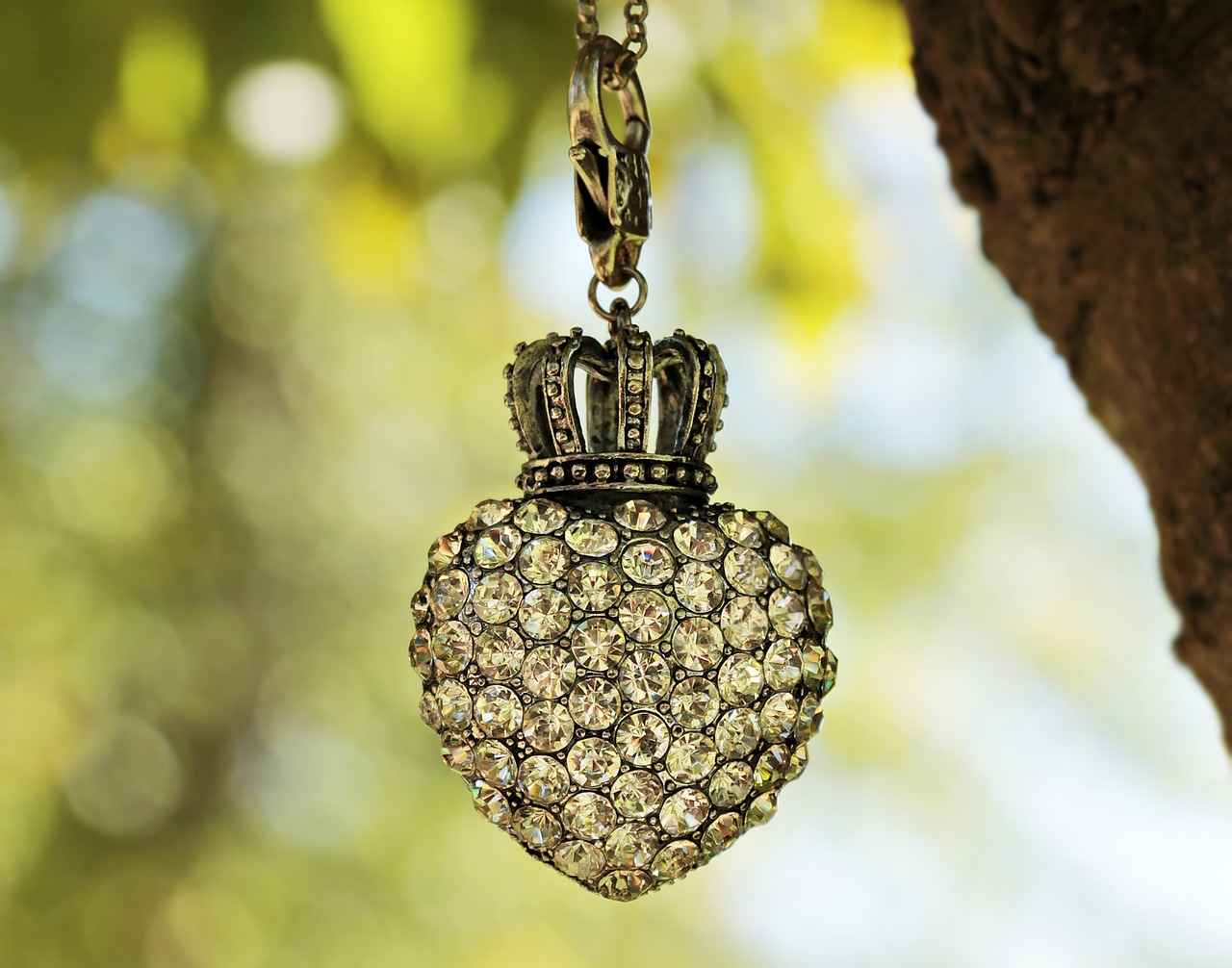
What Are the Common Pitfalls in Antique Jewelry Resale?
Reselling antique jewelry can be a lucrative venture, but it comes with its fair share of challenges. Understanding the common pitfalls that sellers encounter is essential to avoid costly mistakes. This section delves into frequent errors and provides practical advice on how to navigate the resale market successfully.
- Overvaluing Pieces Based on Sentiment
- Neglecting Market Research
- Ignoring Authenticity Verification
- Failing to Document Provenance
- Underestimating the Importance of Presentation
- Rushing the Sale
One of the most significant mistakes sellers make is allowing emotional attachment to influence their pricing. Antique jewelry often carries personal stories and memories, but this sentiment can cloud judgment. It is crucial to approach pricing with a clear and objective mindset. Sellers should rely on market data and professional appraisals to set realistic prices that reflect the true value of the piece.
Another common error is failing to conduct thorough market research. The antique jewelry market is constantly evolving, with trends shifting based on consumer preferences and economic conditions. Sellers who do not stay informed about current market values may find themselves either undervaluing or overpricing their items. Utilizing online resources, attending auctions, and consulting with experts can provide valuable insights into what similar pieces are selling for.
Authenticity is paramount in the antique jewelry market. Sellers who do not take the time to verify the authenticity of their pieces risk significant financial loss. Investing in professional appraisal services can help confirm the legitimacy of a piece, ensuring that it is accurately represented to potential buyers. DIY techniques, such as examining hallmarks and materials, can also assist in this process.
Provenance, or the history of ownership, adds significant value to antique jewelry. Sellers who do not document and present the provenance of their pieces may struggle to attract buyers. Maintaining records of previous ownership, appraisals, and restoration work can enhance the perceived value and trustworthiness of the item.
How jewelry is presented can greatly influence buyer interest. Sellers often overlook the importance of high-quality photography and detailed descriptions. Clear, well-lit images that showcase the piece from multiple angles, along with accurate descriptions highlighting its unique features, can significantly boost sales potential. Investing time in crafting compelling listings can lead to quicker sales and better offers.
In an attempt to make a quick profit, some sellers rush the sale process, which can lead to poor decision-making. Taking the time to evaluate offers, negotiate prices, and explore multiple selling platforms can result in a better financial outcome. Patience is key in the resale market, as the right buyer may take time to find.
By being aware of these common pitfalls, sellers can better navigate the complexities of the antique jewelry market. Implementing thorough research, ensuring authenticity, and presenting items professionally will not only enhance the selling experience but also maximize profits. Avoiding emotional biases and rushing the sale process will lead to more informed decisions, ultimately benefiting the seller in the long run.
Overvaluing Pieces Based on Sentiment
When it comes to antique jewelry, emotional attachment can significantly influence a seller’s judgment regarding pricing. This phenomenon often leads to overvaluation, where the sentimental value attributed to a piece overshadows its actual market worth. Understanding this dynamic is crucial for anyone looking to resell antique jewelry profitably.
Emotional connections to jewelry can stem from various sources—be it family heirlooms passed down through generations or pieces acquired during significant life events. While these memories are invaluable, they can create a bias that clouds objective assessment. To navigate this challenge, sellers must adopt a more analytical approach to valuation.
One effective strategy is to conduct thorough market research. This involves analyzing similar pieces currently available for sale, as well as recent sales data. By comparing your item against others, you can establish a more realistic price point. Websites like eBay, 1stdibs, and auction house results can provide insights into current market trends and pricing.
Additionally, consider seeking the help of a professional appraiser. These experts can provide an unbiased evaluation based on factors such as craftsmanship, materials, and historical significance. Their expertise can help you understand the true value of your piece, free from emotional influences.
Another useful tactic is to create a list of features that contribute to the piece’s value. This list can include:
- Material quality (e.g., gold, platinum, gemstones)
- Craftsmanship and design
- Historical significance and provenance
- Condition and any restoration work
By focusing on these objective criteria, sellers can better appreciate the intrinsic value of their jewelry. This not only aids in setting a fair price but also helps in communicating the value to potential buyers effectively.
Moreover, it is essential to be aware of market fluctuations. Trends in antique jewelry can change rapidly, influenced by factors such as consumer preferences and economic conditions. Keeping abreast of these changes allows sellers to adjust their pricing strategies accordingly, ensuring they remain competitive in the market.
In conclusion, while emotional attachment to jewelry is natural, it is vital to approach the resale process with a clear and objective mindset. By leveraging market research, professional appraisals, and a focus on tangible features, sellers can avoid the common pitfall of overvaluing their pieces. This balanced approach not only enhances the likelihood of a successful sale but also ensures that the jewelry is appreciated for its true worth.
Neglecting Market Research
When it comes to reselling antique jewelry, market research is not just an option; it is a necessity. Neglecting this crucial step can lead to significant financial losses, whether through undervaluing or overpricing items. Understanding the intricacies of the market can mean the difference between a profitable sale and a regrettable mistake.
Thorough market analysis provides insights into current trends, buyer preferences, and pricing strategies. By failing to conduct this research, sellers risk misjudging the value of their pieces. This can lead to overpricing, where potential buyers are deterred by inflated prices, or undervaluing, resulting in lost profits when the item is sold for much less than its worth.
- Analyze Recent Sales: Look at completed sales of similar pieces on various platforms. This can provide a benchmark for pricing.
- Explore Online Marketplaces: Websites like eBay, Etsy, and specialized antique jewelry sites can offer insights into trending items and their selling prices.
- Join Collector Groups: Engaging with communities of collectors can provide valuable information about what buyers are currently seeking.
- Attend Auctions and Estate Sales: Observing bidding patterns and final sale prices can reveal how the market values specific styles and materials.
Several factors play a crucial role in determining the value of antique jewelry:
- Condition: The better the condition, the higher the value. Minor repairs can sometimes enhance a piece’s desirability.
- Provenance: A well-documented history can significantly increase a piece’s worth.
- Market Demand: Trends can shift rapidly; what is popular today may not be tomorrow.
Without proper research, sellers may fall into common traps. For instance, emotional attachment can cloud judgment, leading to unrealistic pricing. Additionally, a lack of awareness regarding market trends can result in holding onto items longer than necessary, missing out on optimal selling periods.
To avoid the pitfalls of neglecting market research, here are some practical tips:
- Subscribe to Industry Newsletters: Many organizations and websites offer newsletters that provide updates on market trends and pricing.
- Follow Influencers and Experts: Social media platforms are filled with experts who share insights into the antique jewelry market.
- Utilize Analytical Tools: Tools like Google Trends can help you gauge interest in specific types of jewelry over time.
In conclusion, neglecting market research can have dire consequences for those looking to resell antique jewelry. By taking the time to understand the market, sellers can make informed decisions that maximize their profits and ensure a successful transaction. Remember, in the world of antique jewelry, knowledge is not just power; it is profit.
Frequently Asked Questions
- What factors determine the value of antique jewelry?
The value of antique jewelry is influenced by several key factors, including its historical significance, the quality of craftsmanship, and the materials used. Items made from precious metals like gold and platinum, or those featuring rare gemstones, tend to hold higher value in the resale market.
- How can I tell the age of my antique jewelry?
Determining the age of antique jewelry involves examining hallmarks, signatures, and design features. Hallmarks can indicate the maker and the era, while specific design elements can help place the piece in a historical context. Researching these aspects is crucial for accurate appraisal.
- Where can I find antique jewelry for resale?
You can find antique jewelry through various avenues, such as estate sales, auctions, and reputable online marketplaces. Each option has its own advantages, so exploring multiple sources will increase your chances of finding valuable pieces at reasonable prices.
- What should I do to authenticate antique jewelry?
To authenticate antique jewelry, you can either seek professional appraisal services or use DIY techniques. Professional appraisers can provide expert insights, while DIY methods may include examining hallmarks, materials, and craftsmanship for signs of authenticity.
- What common mistakes should I avoid when reselling antique jewelry?
One common pitfall is overvaluing pieces based on personal sentiment, which can lead to pricing errors. Additionally, neglecting market research can result in undervaluing or overpricing items. It’s essential to remain objective and informed to achieve the best resale outcomes.

